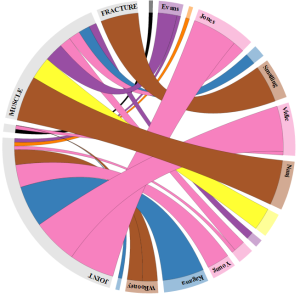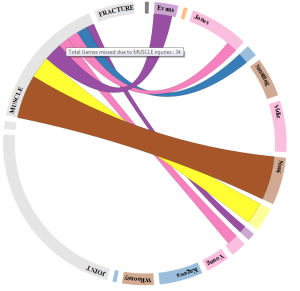Seattle Sounders were eliminated from the MLS playoffs on Sunday night. I have seen a lot of discussion about MLS playoff format and its drawbacks in the past few weeks and more of it now that two lower seeds have made it to the MLS Cup final.

Photo: MLS Playoff Bracket from mlssoccer.com
Both 1st seeds, San Jose Earthquakes (Western Conference) and Sporting Kansas City (Eastern Conference) got eliminated in the conference semifinals by lower seeds LA Galaxy (4th seed) and Houston Dynamo (5th seed) respectively. LA eliminated Seattle (3rd seed) and Houston eliminated DC United (2nd seed) in the conference finals to reach the MLS Cup final.
The recurring themes in these discussions are the following:
- Is the MLS playoff format penalizing the top seeds by not giving enough weight to the regular season?
- Is the winner of MLS Playoffs the “best team” in MLS?
- Can MLS “improve” the playoff format?
This post is a summary of my thoughts on the subject.
Over the years, MLS has tried various playoff formats to give an advantage to the higher seeds:
- Best-of-3 series (higher seed gets to play 2 games at home)
- 2-leg home & home series (higher seed plays the 2nd leg at home) and
- A single elimination game (played at the home of the higher seed)
However, since 2001 only 4 of 12 MLS Cup winners are 1st seeds and two 1st seeds played against each other in the final only twice.
| % of Cup winners that were 1st seeds |
33.3% |
| % of Cup runners-up that were 1st seeds |
33.3% |
| % of Finals that featured at least one 1st seed |
50% |
| % of Finals that featured both 1st seeds |
16.7% |
The “best team”, in conventional terms is the team with the best record at the end of the regular season. In most leagues around the world, the team with the best record at the end of the season is the “Champion”. In MLS, in 8 out of 12 seasons, the “best team” did not win the MLS Cup.
How does MLS playoffs compare to other sports in the US?
I compared MLS with NFL, NBA and MLB playoff winners since 2000-01 (12 seasons)
|
MLS |
NFL |
NBA |
MLB |
| % of Cup winners that were 1st seeds |
33.3% |
16.7% |
33.3% |
25% |
| % of Cup runners-up that were 1st seeds |
33.3% |
75% |
25% |
16.7% |
| % of Finals that featured at least one 1st seed |
50% |
66.7% |
50% |
41.7% |
| % of Finals that featured both 1st seeds |
16.7% |
8.3% |
8.3% |
0% |
Success for 1st seeds in MLS is very similar to that of others leagues. If anything, 1st seeds do marginally better in winning MLS playoffs than in other leagues.
To summarize:
- Playoffs tend to level the field. The possible impact of minor injuries, luck and random on-field events increases manifold.
This implies that all the playoff teams start with a good chance (if not equal) of winning the playoffs. Regular season record is important to make sure a team qualifies for the playoffs. Once a team is in the playoffs, regular season record does not mean much.
- The sudden-death nature and the unpredictability of the playoffs generate excitement; keeps a larger segment of the fan base engaged in the sport for a longer period of time. It also tends to attract casual fans to follow the sport during the playoffs. This is reflected in the higher TV ratings of the playoffs compared to the regular season.
As a league in its early stages of growth, MLS would love to maximize the excitement to get more people spend more time watching/following their league. This would translate into increased TV ratings that will help MLS negotiate better TV deals further along the way.
Is the MLS playoff format penalizing the top seeds by not giving enough weight to the regular season?
No. The unpredictability we are seeing in MLS playoffs is an inherent characteristic of playoffs in general.
Can MLS improve the current playoff format?
It depends on the definition of “improvement”. If it means giving more chance of winning to the top seed, it would be at the expense of some of the excitement and unpredictability.
Example 1:- Limit the playoff teams to 8 (or 6). With an 8-team playoff format, Houston would not have made it this year, With a 6-team format, neither Houston nor LA would have made it.
Example 2:- If the aggregate is even after 2 legs, the higher seed advances. This is being used in Liga MX playoffs since 1996. However, only 6 1st seeds has won the “Liguilla” (Playoffs) since 2000 ( 6 in 34 – 17.6%). Please note that in México there are two half-seasons per year, each followed by a Liguilla.
Based on the league’s growth and economic implications, I highly doubt they will go the route of reducing playoff teams. Trying the Liga MX playoff system won’t harm but I am not very sure if it is going to make that much of a difference.
There are more ways the format can be tweaked than the two examples above. However, it might be very difficult to maximize excitement as well as give a higher chance of success for the higher seeds.
While MLS may not be able to do much with the playoff format given the constraints, they can definitely do a better job of scheduling the playoffs.
Seattle played RSL in Western Conference semi-finals on 11/2 (Home) and 11/8 (Away). They returned to Seattle late on 11/9 due to snow and flew to LA on 11/10 to play the WC final away leg vs. LA Galaxy on 11/11. They had a 1-week break for the return leg of the WC final in Seattle on 11/18.
It might have been much better for Seattle if they got a couple more days between the 2nd leg of the semifinal and the 1st leg of the instead of a minimum break with zero leeway for unforeseen circumstances. DC United faced the same problem due to rescheduling forced Hurricane Sandy.
Issues like these can be fixed easily and they should be.
Is the winner of the MLS cup the “best team” in MLS?
There is no precise answer to this question.
I believe that the team with the best regular season record is the best team. However, MLS teams do not play a balanced schedule. Teams play more games against in-conference opponents than teams outside their conference. This weakens the argument for the team with the best regular season record being crowned the best team. If MLS ever moves to a balanced schedule, I believe that the team with the best regular season record should get more recognition and credit.
With are without a balanced schedule, I believe that playoffs are here to stay.
The onus is upon the teams to figure out a way to peak during playoffs. After all, a seed is just a number; 5th or 1st does not seem to matter during the playoffs.
Will Johnson of Real Salt Lake summed up the playoffs very eloquently:
“It’s a bit of a crapshoot. It always has been over the years and it is what it is. It’s fun and we enjoy playing in these kind of games. There’s so much on the line and anyone can get the MLS Cup. Obviously we experienced that ourselves one year.” ( Source: Seattle Times)
I hope Sounders and Sounders’ fans can experience “that” feeling soon.
Related articles that I found interesting:
Does the best team win the “World Series”?
Effect of the length of the season in deciding the league champion









